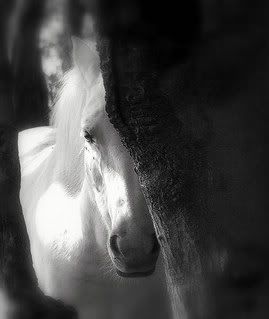What does the upcoming season hide for us? Several houses have some surprises for us and some facts and cross-checking was in order.
According to the Moodie Report,
Guerlain has two new men’s fragrances for the upcoming season:
Habit Rouge Gentleman Driver and
Guerlain Homme L’Eau.
The former, only a seasonal limited edition, bases its inspiration on automobile racing, hence the Gentleman Driver moniker. The press material talks about the (ultra-fetchy) Steve McQueen in Le Mans (with some shades of Bullit no doubt), the Paul Ricard race track and the circuits of Monaco. Yeah, yeah, colour me non impressed. Actually they could have been historically correct and attribute the moniker to the one who really had it: Louis Chiron, the statue of whom stands on the picturesque port of Monaco. One of the great pre-war Formula One racing drivers and a serious contributor to the Bugatti legend (model 18/3 Chiron is named after him), he is the only Monegasque to win Monaco Grand Prix and one of the curves is named in his honour. It seems to me this is Frencher than quoting McQueen, but I think we know who they're targeting eh? "The juice is a reworked version of the original
Habit Rouge Sport*, and features bamboo, pink pepper, bitter orange, jasmine, woods and musks. It is presented in a translucent red flacon, adorned with a metal plaque bearing the
Habit Rouge Sport logo and engraved with the name of the edition: Gentleman Driver. The outer carton is a matching red and metallic mix".
*Come again?? Flanker of a flanker?
For women, Guerlain is proposing the latest
Aqua Allegoria,
Flora Nymphea, this coming spring, to celebrate the 10th year anniversary of the Aqua Allegoria line, and for the occasion a 3D animated film will be presented in which a nymph named
Flora Nymphea will tell the story of flowers and scents led by a bee, symbol of the brand (the film lasts a minute and will be broadcast online this coming March). Guerlain called on French singer Olivia Ruiz to narrate the story. Created by Thierry Wasser, the scent features syringa (lilac), African orange blossom and honey notes, encased as always in the gilted-honeycomb glass bottles of the line.
.jpg)
On the other hand, things are more exciting elsewhere: The in house perfumer for
L'Artisan Parfumeur, Bertrand Duchaufour, has been held on record saying "I am working on several projects for L'Artisan Parfumeur, including a Vetiver, a Tuberose and an Amber-Oriental" (The news had been first broken in an excellent interview on
fragrantica by Michelyn Camen back in August 2009). It is confirmed that L'Artisan and Duchaufour are issuing their tuberose this upcoming spring. Let's not forget that Bertrand is no stranger to the carnal blossom, as the heart of
Fleur de Liane is also a soft coupling of tuberose and magnolia (let's not sidetrack his man-eating floral
Amaranthine for Penhaligon's either, speaking of carnality), while L'Artisan has an under-the-radar cult buttery but uncomplicated tuberose already in the line called
Tubereuse. The new one will be a stand-alone permanent addition. Whether this will signal discontinuation of the older in favour of the newer, as we had announced concerning their
Vanilia while
reviewing their Havana Vanille last August remains to be seen. Personally I don't see the older
Tubereuse moving much commercially and my strong suspicion is that newer is always preferable in this
dance macabre of reformulations, so you know what you should do.

Hermès is issuing their newest unisex this coming April, a scent which will not be part of either
Les Jardins, nor the
Hermessences, nor the
Cologne series (which they promised me they will implement with more instalments soon). Termed
Voyage d'd'Hermès, the new fragrance breaks with the tradition of the house's bottle designs as well, taking the shape of one of the petite marocinnerie products into a glass shape that will hide the spray mechanism under a metal "pochette" designed by Phillipe Mouquet. According to a Vogue insider
the release is NOT a mainstream launch, this is a special product for travelers, hence the clever packaging
and will be exclusively sold at Hermes boutiques, which according to official info so far is a mainstream distribution product (boutiques and department stores). The scent will feature mainly musks with fresh and woody notes in the
Jean Claude Ellena style.
ETA: Official info tells me the bottle is refillable offered in 35ml and 100ml and official launch is April 2010.
And let's not forget the re-issue of the previously limited edition
Calèche Fleurs de Méditerranée centered on mimosa, which we
had announced a while ago.
Interestingly, according to
Sympatico.ca, "It was also announced in late December that the French label plans to launch a new brand in China, called
Shang Xia. The goal is to play a bigger role in the Chinese market by creating items and styles using materials rooted in the Chinese culture". An interesting development to watch in relation and perspective to the markets catered by Hermes already and their future strategies.
To the delight of several Hermesophiliacs,
the exclusive Hermessences are finally online, a rumour which we had entertained for a long while but is now reality. Interestingly, however, it is only the big bottles which are available for online purchase and not the discovery travel sets (those contained four mini-sprayers of 15ml/0.5oz in either four assorted fragrances,
actually the original quartet introduced, or 4 of the same fragrance). You can visit the American site
on this link. Although there are a few mentioned there, the international sites stock more of the line. Nevertheles
Brin de Reglisse is lacking from all of them!! I hesitate to attribute it to a sudden omniplacent lack of stock, as it wouldn't make sense when the others are all at the ready. It would be perhaps be more indicative of the truth if I hypothesized that the ratio of natural lavender in
Brin de Reglisse (an aromatic material extended to its natural extremetieis approaching licorice notes) required adjustment in view of the upcoming IFRA restrictions. Either that or...But let's not rain on anyone's parade with similar dishearteaning news as the
Lutens discontinuations. I trust that
Brin de Reglisse will be soon back online proving it's not chopped off the line.
Related reading on PerfumeShrine: Upcoming Releases, News from the Industry, Guerlain series
pics via moodiereport, miriamescofet.com and hermes
 There is something fascinating about getting to know the nuts & bolts of perfumery, as anyone who has followed our raw materials guides here on Perfume Shrine can attest.
There is something fascinating about getting to know the nuts & bolts of perfumery, as anyone who has followed our raw materials guides here on Perfume Shrine can attest..jpg)

.jpg)


.jpg)


.jpg)









